Goal
Understand the basic way we hear.
"There are many kinds of noise - but only one silence." -Kurt Tucholsky
Hearing
Here are the general steps to how we hear:
A wave strikes the ear and sets in motion a mechanical contraption in our ears.
The mechanical contraption gets converted to action potentials (an electrical signal) our brain can interpret.
Our brain process the sound and we “hear” it.
Consider listening to an orchestra. You can “focus” on particular sounds, you can focus on piano, or on clarinet. In a crowd you can “focus” your hearing. Hearing is … complicated, to say the least. There are two sides to it. The mechanical side and the psychoacoustic side which involves what our brain "does" with the sound (sometimes it may even invent its own sound!). In this lesson we are only concerned with everything up to the brain.
Human Ear Limits
We can hear air particles bouncing against our eardrum and even our own blood moving around in our head! This is the threshold of human hearing and is around 20 micropascals.
We can also hear things as loud as a rocket taking off, things that could damage our ears at the threshold of pain.
The 3 Sections Of the Ear
Outer Ear - pinna, auditory canal, eardrum
Middle Ear - Air filled gap, 3 bones called the ossicles connect from the eardrum to the oval window. They are called the malleus, incus, and stapes, also known as the hammer, anvil and stirrup (about as big as a grain of rice). They form a mechanical lever that is actuated by air hitting the eardrum. This pushes the oval window pushing the liquid in the Cochlea.
Inner Ear - Semicircular Canals, Cochlea


The Outer Ear

The outer ear is the part of the ear we can see and the ear canal. The part of the ear we can visibly see is called the Pinna and its job is to gather the sound. One of its jobs it to gather sound. Here is an analogy: in fishing we place a net into water to catch fish. In hearing we place a pinna into air to catch sound.
The pinna can be broken into many small pieces. Each ridge and bend causes very small delays on the incoming sound at different frequencies. These delays aid us in telling where a sound source is vertically. Check out this video that shows a way you can experiment with this.

The ear canal is the the tube that goes down your ear and terminates at the ear drum. It is like a tube with one end closed and the other end open. Such a tube will resonate, meaning it will affect the amplitude of some frequencies differently than others. The average ear canal is about 2.5cm long and has a diameter of about .7cm. Knowing how long it is will allow us to compute the resonant frequency.
We will cover resonance in a later lesson but the ear can be described as a pipe closed at one end and open on the other. Such a systems length will be 1/4th of the length the resonant frequency. This means if we multiply the length of the ear by 4 we will get the wavelength of the resonant frequency. Thus:
The averages I am using come from "The Master Handbook of Acoustics" by F. Alton Everest. This same book also states that the ear canal amplifies 2k to 3kHz by about 5 dB SPL. The ears shape is very complex and it is not surprising it doesn't line up with such a simply model. In reality the shape of the outer ear's pinna and other factors influence the ear a lot.
One neat consequence of the ear being like a pipe with a closed end is that it will naturally enhance odd harmonics. This is why square waves tend to sound louder than saw waves for example. The reason for this will be explored when we look into resonators.
Finally there is the ear drum. It seals the outer ear off from the middle ear. We will look at its function more in the context of the inner ear. For the outer ear it really serves to simply act as a seal.
Middle Ear
The middle ear is composed of the ear drum, ossicles, and eustachian tube. The primary job of the middle ear is to take the mechanical sound waves and amplify them. The reason they need amplification is the waves much reach a part of the ear that is filled with liquid. Liquid has a different impedance than air does and if we try to send a wave into the liquid directly it won't work very well, so the inner ear impedance matches the air to the liquid by amplifying the sound. This is the primary function of the middle ear.
Neat Fact, the ossicles are fully formed at birth and do not grow. These bones are small! The malleus is about 8mm, with the incus at around 6.8mm and the stapes at about 3.5mm tall!

The ossicles from a bridge from the ear drum to the oval window. They are 3 bones that act like a mechanical lever that causes the amplification to occur. The names of these bones are the malleus, incus, and stapes. Another name for them is the hammer, anvil and stirrup so named because of their shapes.

The Malleus is attached to the eardrum which connects to the Incus and finally to the stapes that connects to the oval window.
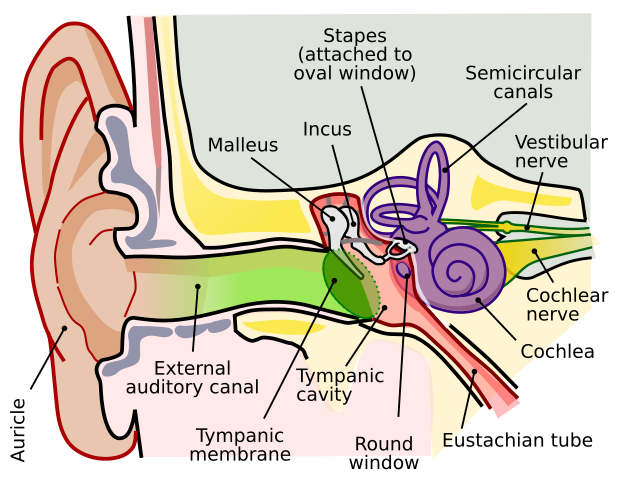
Lets take a closer look at the amplification process. The area of the ear drum is about

The Eustachian tube vents the middle ear to the upper throat allowing the air pressure of the middle ear to equalize to the atmospheric pressure. (Swallowing opens the tubes and our ears “pop”). This is why high altitudes or pressure changes can cause ear pain, if there is a pressure difference between the middle and outer ear then it will cause a constant push or pull on the ear drum!
The Inner Ear
The inner ear's primary job is to take these waves and convert them to neural signals our brain can use. There are 2 important structures, the cochlea and the semicircular canals. The cochlea is known as the "hearing organ". The semicircular canals are known as a "balancing organ". We won't focus on the semicircular canals.

The cochlea is about the size of a pea encased in bone. It has two ¾ turns and unwound is about an inch. It is filled with fluid and divided into two by the Basilar Membrane.

Here is an uncoiled Cochlea. As the ossicles move they push the oval window. This pushes the liquid in the Cochlea. This in turn causes the Basilar Membrane to move, which divides the Cochlea. (There are 3 fluid canals that all have names but we don't need this level of detail.) The Basilar Membrane responds to different frequencies based on position. Near the start of the membrane high frequencies reside and near the back low frequencies reside. Depending on what part of the membrane moves tells our brain what frequencies we have heard! Sort of like a fleshy FFT!

They way the Basilar Membrane splits frequencies up into specific locations is due to it being tapered and it being stiffer on one end than the other. This causes different resonances depending on the location of membrane so as a wave comes in it will naturally excite the specific part of the membrane.
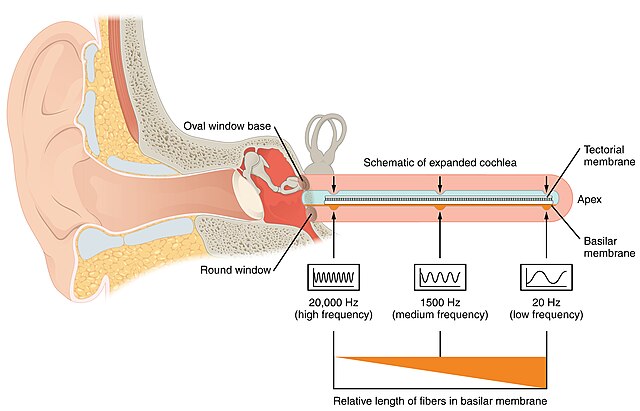
Along the top of the Basilar Membrane is the Organ of Corti.
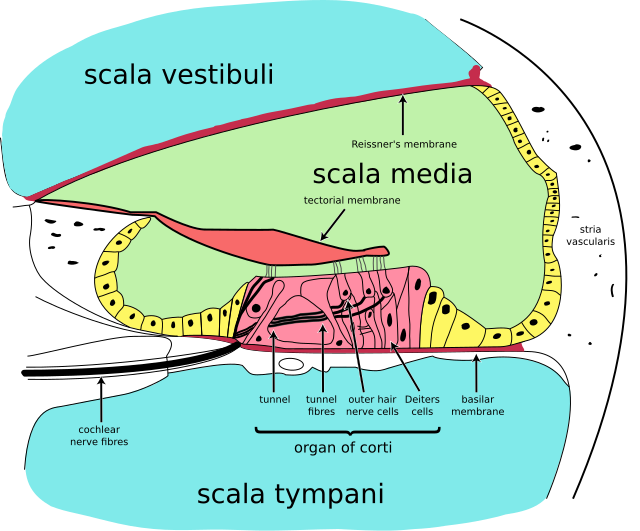
The Organ of Corti contains the Tectorial Membrane and hair cells called Stereocilia. When the Basilar Membrane moves it causes the hair cells to collide with the Tectorial Membrane. This bending them opens up ion channels that allow neurotransmitters to be released that cause a signal to be sent through the auditory nerve. This process is sometimes referred to as an "action potential", or an electrical signal that will propagate up to the brain in some books since that is essentially the function of the transmitters.
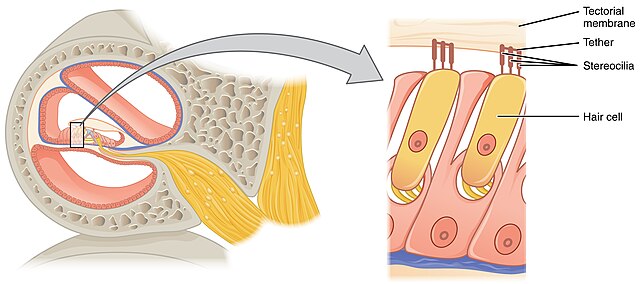

It is astonishing to see how small these things are!

The Stereocilia are truly amazing. They are hairlike nerve cells that are responsible for sending the signals to the brain. There are 2 types of hair cells. Inner hair cell and outer hair cells.
Inner hair cells (Type 2) convert mechanical vibration to electrical signals. They are organized in a single row. They are the cells responsible for us "hearing".
Outer hair cells (Type 1) act as amplifiers. There are 3 rows of outer hair cells and aid us in hearing soft sound and "fine-tuning" the cochlea. Interestingly parts of the brain actually send signals back to the outer hair cells! This leads to another extortionary ability of outer hair cells, they can elongate or shorten to refine how sensitive the ear is at a particular place! This gives them a mechanical function to actually generate noise in the ear! (These otoacoustic emissions of the inner ear are used to diagnose hearing when it comes to outer hair cells.) Outer hair cells will thus vibrate at different frequencies to refine what is allowed to get to the inner hair cell. In this way our ears are "active" devices, not passive and have a "tuning" element to them!
Treat your ear's hair cells with respect! They do not grow back or repair themselves. Once they are damaged thats it!
Here are some real pictures of what these hair cells look like.
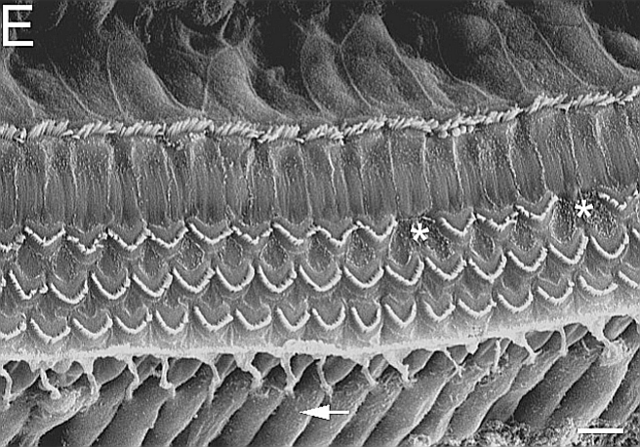
We might imagine that 1 cell firing would be the “threshold of sensitivity”. According to the Master Handbook of Acoustics the faintest sound is about .04nm movement, about the radius of 3 hydrogen atoms!
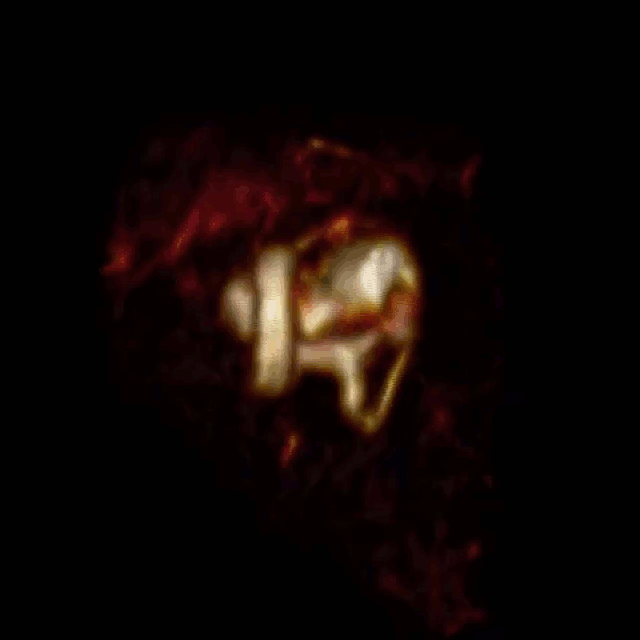
The Brain
Once these signals are sent they go up the auditory nerve. The auditory nerve is a branch of the eighth cranial nerve or the vestibulocochlear nerve. The auditory (or cochlear) nerve the branch the sends the information for hearing while the vestibulocochlear nerve also has information about balance, spatial sensation and posture. Once the information gets to the brain we get into the wild wild world of Psychoacoustics which is what our brain does with the acoustic information it has gathered.
Bone Conduction
The Ossicles are not the only way to get the fluid in the inner ear moving. The skull it itself may vibrate, a process called bone conduction, and cause the fluid of the inner ear to move as well! This is why our own voice sounds different to use through a recording than when we speak! It no longer has the bone conduction!
There are popular headphones with this technology built in and as a runner I have used them for years. It is magical the first time using them because they do not sit in your ears! The sit in front of them and vibrate your skull. It allows one to still hear normally through the ear canal and listen to something else through the bone! They are the only approved headphones for some bike races. The ear canal also serves as a filter of sorts. If you completely block the canal (say by shoving a pair of in ear headphone in there tightly) then you will hear your footsteps much more, especially while running!
They are used in those with hearing loss and are especially helpful if the ear canal is block or something else is wrong with it but the inner ear is mostly preserved.

Beethoven as he started to go deaf used a rod attached to a piano to hear (supposedly). He would clench his teeth around it and it would cause his jaw to vibrate. These vibrations made it to his ear so he could hear. (He did a lot more than just this, he was very experimental according to some books.)
In a letter to Franz Wegeler Beethoven said: “I still have to romp about valiantly, if it weren't for my hearing, I would have torn halfway across the world by now, and I have to - for me there is no greater pleasure than practicing and showing my art... I want to grab fate in the jaws, it certainly shouldn't bend me down completely.”
- letter to Franz Wegeler, 16 November 1801, in A. C. Kalischer (ed.) Beethoven's Letters (1909)
Questions
Can you name all the parts of the ear? (We didn't cover #14 the Temporal Bone so I will just give that one to you.)
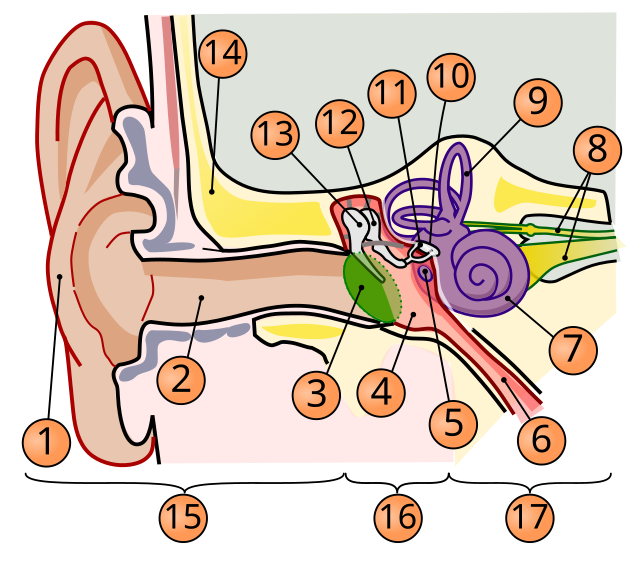
To support this series please consider donating via
paypalor joining the
patreon.